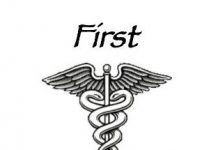The following is the foreword from my upcoming book “A Critical Look at CRT in Education, Law, and Society.” I am finishing up the final chapters and will put it through another round of editing as I have edited each chapter as I go. I am not entirely settled on the title as of now, but the book does take a deep dive into how CRT comes from something called Critical Legal Studies, which of course, originates from the Frankfurt School’s Critical Theory. My biggest hope is that this book will be read by the motivated people challenging their local school boards and that they will see that they can’t stop there. Ending CRT will require conservative-minded educators and legal scholars to challenge the theory in our legal and educational institutions, where it is being utilized and researched by people who reject conventional notions of objectivity.
My motivations for writing a book on Critical Race Theory are not only based on my own firsthand experiences, but a deep sense of concern for what it is doing to our country. I was first introduced to the topic in 2010 as a student in an undergraduate Social Work Program. What started as a genuine interest in helping others overcome their problems turned into a quest to expose the rampant liberalism, and for a lack of a better term, “thought reform,” which was dominating our schools. There was an overwhelming pressure to conform to the idea that America’s roots sprung from racism, and that white people structured society for their benefit alone. Terms like White Privilege and Whiteness, exemplify this concept by suggesting white supremacy dominates our nation, and the traditional values we hold dear like family, individual responsibility, achievement, and even freedom are racist constructs.
Another motivation for writing this book is to clarify what Critical Race Theory is. It is getting major attention now because parents across the country realize their children are being indoctrinated into a twisted worldview ̶ ̶ however, it has been around since the 1970s. The general misperception is that they use the theory in elementary school to teach the kids their ideas and beliefs come from an ingrained sense of superiority because they are white, and the nation in which they live represents a system of white supremacy. While this is happening, it is way deeper than that. It is an advanced understanding of the science of human behavior. It is the endgame of decades of study in the psychology and frailty of human beings, and how to change their beliefs and attitudes to create a compliant citizenry. To put in the simplest of terms, at the elementary education level, it is political conditioning meant to rewrite the way our children see themselves, their families, and their country. At the doctoral level, a means of rewriting and reinterpreting American law, policy, culture, and education from a Critical Race perspective.
Americans understand CRT is a Marxist philosophy, as many of the major themes which drive it revolve around economic equality. This is true as well. However, the very ideas of equality are being torn apart as Critical Race scholars blur the lines between equality of opportunity and equality of outcomes. The idea of equality itself is brushed aside as a white “social construct” that defines how minorities identify, or even fall in line with, mainstream American culture. Critical Race Theory goes beyond the tenets of classical Marxism, as Marx’s theories of pitting the bourgeoisie against the proletariat did not lead to the grand world Utopia that was promised. Drawing from Marxist-inspired Critical Theory, other prominent communist thinkers, like Antonio Gramsci, found new ways of dividing people. The term counter-hegemony refers to Gramsci’s attempts to unite all so-called ̶ marginalized groups ̶ under the banner of oppression, with American society itself being the dominant oppressive culture. All groups may have their own self-identified reason for being oppressed, but the uniting factor is whiteness as the oppressor.
There are many challenges that present themselves in writing this book. The most pressing is getting Americans to understand what they are seeing in their children’s kindergarten class is not Critical Race Theory, but an application of it. It has become so embedded in our educational systems that fighting it on this level is useless. You can ban its use by name, but that will not stop it where the actual work is being done ̶ ̶ the halls of higher academia. Your children are not being taught the theory. They are being taught through the methodologies that doctoral-level Critical Race scholars develop in our universities. The next challenge is writing the book in a simple, easy-to-read format everyone can understand. Critical Race Theory is a heavy-handed concept that goes way beyond the mere issues of racism and structural inequalities. I cannot explain it simply by saying your child’s first-grade teacher taught the class America is racist because of slavery. Critical Race Theory is a scholarly endeavor where those who resent all aspects of America have learned to apply Marxist theory to a pre-existing sore spot in American history. The teachings of Critical Race Theory are influencing every aspect of American culture, from education to entertainment.
In mathematics, for example, Critical Race scholars have devised a teaching philosophy where public schools teach math as a vehicle of power and identity that can either build up individuals or oppress them because it is a symbol of societal prestige. It is almost as if the people devising these ideas believe minorities cannot achieve success in math. Critical Race Theory even infects the English language because, according to CRT scholars, it traps minorities in a cultural identity that is not conducive to who they are. Movies, books, and television shows, denigrate America’s culture of individual liberty and personal responsibility, while socialism is built up as our savior. Whites are being presented as selfish, while minorities are compassionate, caring, and selfless.
I want this book to represent a scholarly attempt to deconstruct Critical Race Theory, and the attitudes, beliefs, and opinions of those who push it, from the perspective of American conservatism. There are over one-hundred sources written by CRT and legal doctorates that are cited throughout. I also want it to be written to encourage students to push back when encountering such teachings, whether it be at the high school or higher education levels. Critical Race Theory is being used to create a new generation of racial activists advocating for socialist policies based on misperceptions of equality and lies about American history. It is being used as a tool to harass and silence opposition, reform thinking, and tear down cherished American values. It is presented in the halls of higher learning as the correct way of thinking, and any deviation from it is racism. I witnessed as my classmates conformed to the requirements to admit their hidden racism and acknowledge how their white privilege affected others.
There is an underlying assumption that while in school, students must keep their mouths shut, and once they graduate, they can go out in the world and affect change in a positive way. This is not true unless you intend to fight for liberalism. A person afraid to assert their values in school will be just as afraid to do so in the real world where more is at stake. CRT is a tool being used to condition students into conformity by aligning their pre-existing values with racism. The powers that be know all too well the human desire to fit in and not stand out. Parents expressing their opinions at school board meetings will not stop critical Race Theory. It will not be stopped by banning its use in elementary education. It can only be stopped by understanding it in its entirety and getting inside the educational establishment to challenge it at the academic level. As William Tate, president of Louisiana State University, and author of Towards a Critical Race Theory in Education states, “CRT is not something to be taught to the undergraduate student. It is a framework used in law school and in PhD’s education to better understand how laws are formulated and the influence of law on everyday life.”[1] If it isn’t something to be taught to an undergraduate student, then fighting it at your local school board meeting will have no effect whatsoever. This is what Americans need to understand moving forward.
Americans need to understand that it isn’t just Critical Race Theory being used as a tool in the classrooms, the entire education system has been set up from the beginning by people who believe it’s the village’s job to raise children. John Dewey, for example, who the left considers the father of modern education, explained in Democracy and Education[2] that individualism is detrimental to the social functioning of any society. He believed that we all shared the same social environment, therefore, no one had individual rights because they would encroach on the collective space that we all shared. This is important to understand because Dewey helped to create America’s public school system. Looking at the problem from this perspective highlights how something like Critical Race Theory is the golden crown achievement of what they have been able to implement in education. It isn’t the start of an agenda to transform our children. In some ways, it’s the culmination.
Critical Race Theory is also, without a doubt, being used to push global government and lessen the United States’ influence on the world. In a paper entitled Becoming Planetary Citizens: A Quest for Meaning,[3] for example, it is argued that a global government can eliminate racism. We are watching as global governing entities such as the World Economic Forum push their visions of a Great Reset, which is nothing more than the completion of the U.N.’s sustainable development agenda. This rings a personal bell with me because while a student at Northeastern State, there were posters all over the walls that stated: “Be Good Planetary Citizens.” The bigger point I am making is that Critical Race Theory in education appears to be the tool they are using to bring their efforts of the last 100 years to fruition.
I will cite everything that is of importance, and I will do my best to guide readers to my sources. I will say, however, that not every source will be available in its entirety. Some material that I have access to through a school database may only be partially available on a search engine like Google Scholar. At the very least, I will show the source exists, if I can’t show the full version. It will be up to readers at that point to pursue the source further for their own clarification. I will also attempt to prevent listing the same reference over and over. After the first listing of a reference in the footnotes, I will only use in-paragraph citations if that work is referred to again unless it isn’t mentioned for several chapters. With that being said, I hope you get something from this book. I am writing it because I believe it is imperative that we know what we are dealing with, and that fighting this at the public-school level will accomplish little. As you will see in the following pages, this is an effort being organized in the highest halls of academia, and it is being used to do far more than tell your fifth grader he or she is racist.
[1] 2021 Louisiana legislative session: A return to (somewhat) normal – Louisiana Budget Project (labudget.org)
[2] Dewey, J. Democracy and Education (1916) Northwood Massachusetts. The MacMillan Company <h1>Democracy and Education by John Dewey</h1> (fulltextarchive.com)
[3] Pierce, C. (1972) Becoming Planetary Citizens: A Quest for Meaning. Childhood Education, 49(2) pp. 58-63. Becoming Planetary Citizens: A Quest for Meaning: Childhood Education: Vol 93, No 3 (tandfonline.com)






















